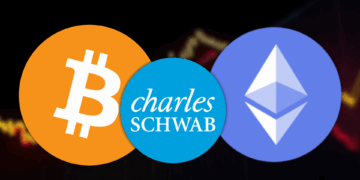One cannot speak of Ethereum without mentioning Vitalik Buterin, the most renowned co-founder and author of the original whitepaper released in 2013. The project, which launched in 2015, is the pioneer of the idea of a blockchain smart contract platform, making it the first programmable blockchain.
Ethereum has become a hub for financial services, games, social networks, non-fungible tokens, and other Dapps. The blockchain coin Ether (ETH) has the biggest market cap in the smart contract blockchain category and is second only to Bitcoin (BTC) overall.
The Ethereum Blockchain
The use of smart contracts was possible for the first time on the Ethereum blockchain. What is a smart contract? It is code stored on the blockchain allowing automatic execution of agreements. The two most popular languages used on Ethereum are Solidity and Vyper.
Since Ethereum is a public blockchain, anyone can view and track transfers; however, unique cryptographic addresses preserve the user’s privacy.
Popular examples of smart contracts involve using stable coins, decentralized gaming, and Defi, amongst many others. The blockchain is not controlled by anyone and exists through the participation of the community via nodes, thus eliminating the need for individual servers and cloud systems owned by major internet providers.
The Ethereum network started as a proof-of-work consensus, with a planned move towards proof-of-stake. This change only requires ETH to be staked in a smart contract.
Ether (ETH)
Ether (ETH), the currency on the Ethereum blockchain, is purely digital. It can be bought and owned by anyone, used for peer-to-peer transactions, and is entirely independent of the financial banking system.
Thanks to all the Defi applications built on Ethereum, it is possible to borrow, lend, and earn interest in Ether or other Ethereum-backed tokens, a part of Ethereum’s ecosystem, which has in recent years seen exponential growth.
The most commonly known Ethereum-backed token types are ERC-20 and ERC-721. The first type represents fungible tokens like in a currency, where every token equals the other. The second represents non-fungible tokens (NFT), where every token is unique.
Due to its popularity, ETH can be bought on all major exchanges. With a market cap of around $189 million, it reached an all-time high of $4,878 in Nov 2021.
Perhaps, the most popular NFTs are collections sold on marketplaces, such as the Bored Ape Yacht Club. Ethereum can be held on various hard and soft wallets, allowing users to view their balance, connect to applications, and send and receive funds.
Ecosystem
Currently, the Ethereum blockchain has an impressive 2970 projects built on it and 50.5 million smart contracts deployed. With 71 million wallets holding ETH in their balance, the network has seen a whopping $11.6 trillion transacted only in 2021.
Ethereum provides users with privacy, decentralization, resistance to censorship, and other benefits such as trustless computation and verifiable behavior. However, it comes with its set of challenges.
The network can only process around 10 – 15 transactions per second, meaning that increased use leads to network congestion and therefore increased gas fees.
The network was deployed last August 2021 and changed how transaction fees work via the London upgrade. Using the network requires a gas fee (denoted in gwei), paid in ETH for every transaction. These fees go to miners who mine the blocks, and since only a few transactions fit in a block, miners are incentivized to prefer the highest-paying transactions.
Therefore, more congestion means higher gas fees. This has long been one of the greatest challenges of the network and is often seen as a major obstacle to mainstream adoption.
Ethereum challenges and upgrades
Apart from network congestion, Ethereum faces other challenges. Since every node is required to verify every transaction, the network is safe and decentralized but slow. Increasing the power of the nodes is a solution; however, this eliminates users without the necessary hardware, thus threatening decentralization.
On the other hand, growing transactions per minute mean increased delays in the confirmation of nodes, which threatens network security. This is known as the scalability trilemma.
Despite Ethereum’s protocol success, the community always expected future changes and upgrades to see how best to serve the users, which is why the network is moving towards a proof-of-stake model.
This move, called the Merge, is highly anticipated and expected to occur in the second half of 2022. It will allow more operating nodes without increasing the power of each node.















